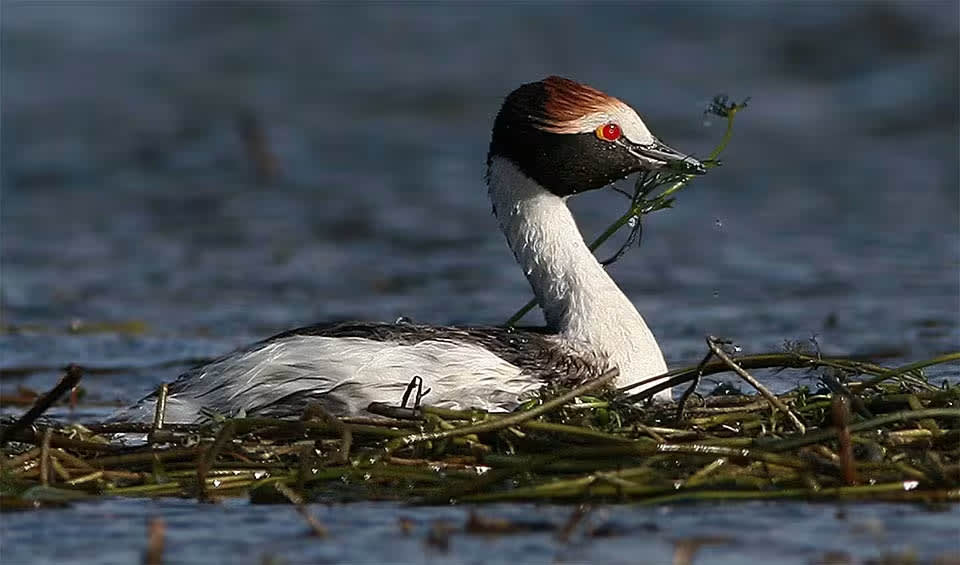Podiceps
With feathers so dense that water rarely penetrates to their skin, keeping them warm and insulated
Grebes are known for their excellent swimming and diving abilities, as they spend much of their time in water. These birds are medium-sized and have a unique body structure that is well-suited for life in aquatic environments. Their bodies are sleek and streamlined, with dense, waterproof feathers that help them stay buoyant and dry even after long periods in the water.
One of the most distinctive features of Podiceps grebes is their feet. Unlike most birds, grebes do not have webbed feet. Instead, they have lobed toes, which are wide and flat, with flaps of skin along the sides. These lobed toes act like paddles, allowing the grebes to swim quickly and maneuver easily through the water. Their legs are positioned far back on their bodies, which helps them propel themselves efficiently while swimming and diving. However, this leg placement makes them awkward on land, and they are rarely seen walking, preferring to stay in the water.
Grebes are expert divers, and they can dive to impressive depths to catch their prey. Their diet mainly consists of fish, insects, and small aquatic creatures. They are known for their remarkable hunting technique, where they dive underwater and use their sharp beaks to snatch up prey with precision. Grebes can stay submerged for several minutes and often travel long distances underwater in search of food. This ability to dive and swim so effectively makes them highly adapted to their aquatic lifestyle.
Podiceps grebes have an unusual method of eating feathers. They often eat their own feathers, and they also feed feathers to their chicks. This behavior might seem odd, but it serves an important purpose. The feathers form a mat in the stomach that helps protect the bird from sharp fish bones and aids in digestion by breaking down indigestible parts of their prey.
Species in this genus
Hooded grebe
Easily recognizable by its distinctive black hood, which it can raise or lower at will


